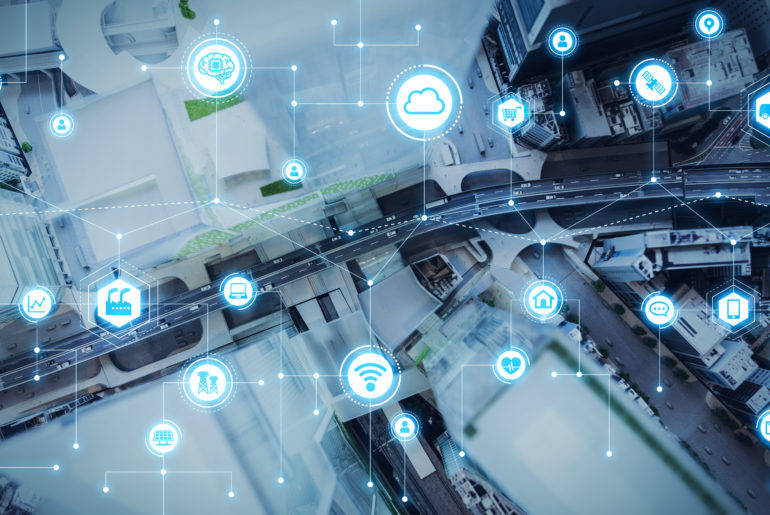Think about all the connected “things” you carry with you or have in your home: Smart phones, iPads, PCs, fitness watches and many other devices. Some we’ve used for years, others are part of the growing Internet of Things (IoT). We use them frequently for communicating, connecting socially, monitoring our health and fitness or conducting business. All of this data is contributing to what IDC calls the Global DataSphere. You may not realize this, but as soon as you connect anything to the internet, you establish a data exchange relationship that adds to the world’s DataSphere until the device is disconnected.
IDC’s Worldwide Global DataSphere IoT Device and Data Forecast, 2019–2023 analyzes the relationship between all the connected ‘things’ and the data they create. The data is categorized into different types to allow us to understand trends in usage, consumption and storage.
IDC expects there to be 55.9 billion connected devices by 2025 (and by the way, that number is more than 150 billion if you count RFID tags). The largest category of devices is in industrial, automotive and navigation, followed by smart home devices and wearables. But, most of the data produced comes from video-based devices, such as video surveillance cameras, due to the large volumes of rich (high number of bytes) video images. By 2025, IDC projects that there will be 79.4ZB of data created just by connected IoT devices alone.
That’s a lot of data produced by a lot of ‘things,’ and it isn’t slowing down. Understanding the speed at which ‘things’ are being connected with the foresight of just how much data is going to be produced will help tech suppliers provide solutions and build partnerships that scale. Every new connection point is another faucet of data and a potential vulnerability and businesses are increasingly concerned with things like security, network capacity and cost. Gauging the amount of data coming, how it’s coming, and knowing what to do with it will be critical factors in determining whether you will ride the data wave, or be swallowed up by it.
In IDC’s forecast, our analysts look at why the data is increasing so rapidly, where it’s coming from, and where it will go.
Why do we have so much data?
There are several reasons for the increase in data-producing products.
Many of these new devices being connected are producing data constantly; data is being captured and created 24 hours a day, 7 days a week. Sensors in machine functions are becoming more advanced and able to capture more (and richer) data including audio, image and video. Devices are being integrated with a level of intelligence where analytics (today) and artificial intelligence (future) are magnifying data creation beyond just the data capture. In other words, we see the increase in data because more devices with multiple sensors are being connected to networks, data per device is growing at a faster pace than ever before, and analytics surrounding this data is just beginning and advancing rapidly.
Where is all this data coming from?
IDC segments the types of devices that are producing data in the following way:
- Surveillance cameras and drones, including the installed base of connected fixed surveillance cameras, mobile surveillance cameras and drones.
- Industrial/automotive/navigation, including connected industrial machines, commercial smart building systems, test and measurement systems, autonomous vehicles, or navigation devices.
- Household/wearables, including all smart home devices including appliances, lights, locks, and thermostats. It also contains connected toys and wearables like smartwatches.
- Medical, including all connected medical devices, remote patient monitoring of vital statistics like blood pressure and pulse, implanted medical devices like defibrillators and insulin pumps.
- Industry terminals including ATMs, point of sale, and ticketing terminals.
- The last category (other) includes devices across a spectrum of gaming, AR/VR, vending machine, connected gas pumps, RFID readers, digital signs, smart meters, and other sensorized devices.
Where does all this data go?
Now that we know where the data is coming from and why, the next step is to figure out where to store it. In IDC’s Forecast our analysts have outlined 3 areas where this data will live.
- Core: This is a datacenter or large enterprise managed control center like an enterprise IT datacenter, an electric grid operational control center, a cloud server farm, or an online entertainment distribution center.
- Edge: These are intermediate, enterprise-hardened systems and devices that aggregate, distribute, and process data from sensors and devices. Examples include in-store controllers, field servers, Class 5 telecom switches, substation controllers, branch offices, and enterprise gateways.
- Endpoint: Those devices that essentially sit at the end of the network and don’t include devices within the edge and core, like most consumer electronics, IoT devices, sensors, remote smart equipment, POS, kiosks, digital signage, mobile phones, PCs (not servers), surveillance cameras, drones, and wearables.
To better understand the storage trends for the immense amount of data created, IDC’s Worldwide Global StorageSphere Installed Base Forecast, 2019–2023: The Global StorageSphere Installed Base by Core, Edge, and Endpoint estimates just how much of the DataSphere is stored, and dives deeper into these three categories.
With more demand and more data created, there is an increased need for solutions that help with data management and provide analytics capabilities to distill and interpret the data to guide business processes and decisions. By using IDC’s Worldwide Global DataSphere IoT Device and Data Forecast, 2019–2023 businesses will be able to understand their own impending data wave and take strategic steps to manage, store, and protect it; but more importantly, capitalize on its intrinsic value.
There’s another crucial component to consider when looking at the Global Datasphere: security. How do you protect all of that data? Find out with IDC’s eBook: “Security and the Global DataSphere: A Data-Driven World Needs its Data Protected”.




